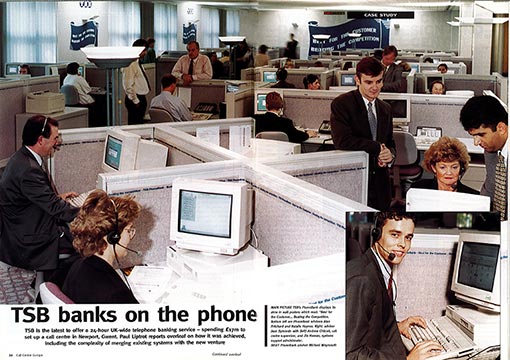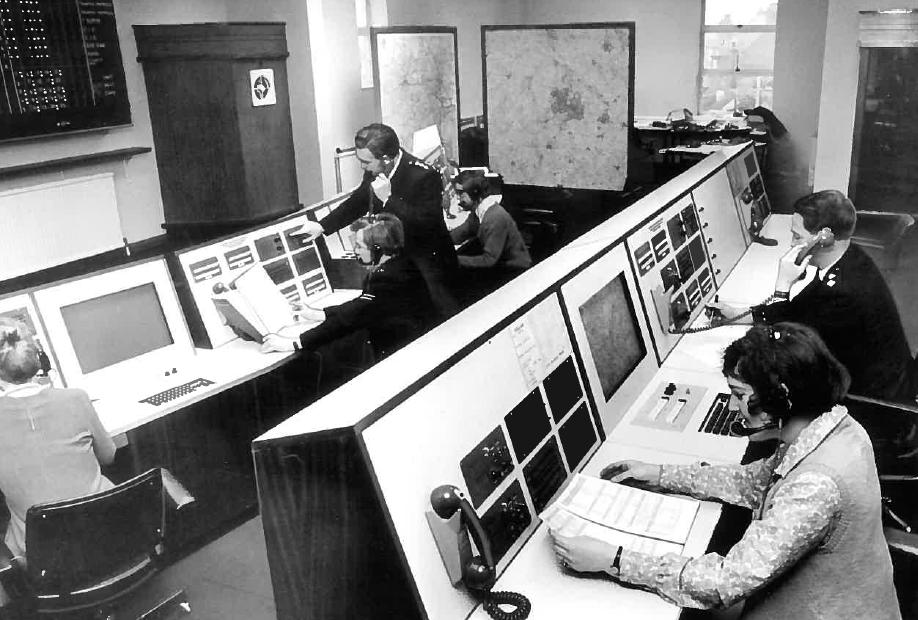As you've been told a million times before (and around half of those times by me), customer experience is absolutely one of the most important parts of your business.
Whether that's starting a loop, working with the consumer all the way until their transaction, of providing help after their purchase, a customer needs to feel valued if you want them to buy again and recommend your product or service to others.

A good proportion of the work that goes into maintaining a healthy customer experience, and one that works across channels, comes from call centres and contact centres.
They can be some of the key points of contact between businesses and customers, and what happens here can affect their view of your brand. A good experience can reinforce good vibes from previous contacts, while if customer encounter problems, then this can sour the relationship.
In this article, we look at the differences between call and contact centres, and what makes a great experience for customers.
What is a Call Centre?
We've all dealt with a number of call centres in our time and by all accounts, we're going to be dealing with a lot more for many years to come.

There are a few types of call centres, and each type has its own purpose. Most call centres operate for B2C brands, and are often focused on sales and marketing.
Most call centres on the other hand are focused purely on customer service; helping people with certain transactions, and subsequently helping them with products and/or services they purchased that may not be working in some capacity.
Of course, call centres also deal with everything in between those two tasks, with an example being a Call Centre agent at T-Mobile helping a customer change their phone contract plan or - a little old-fashioned, mind - helping a customer complete an order form a mail-order catalogue.
In short, call centres are seen as problem-solvers by the consumers.
What is a Contact Centre?
First and foremost, a lot of the time when people say call centre, they mean contact centre (and vice versa). I suppose that's just the topsy-turvy world that we're living in, eh?
For the most part, a modern-day contact centre incorporates your run-of-the-mill call centre, but does so much more than that.
Contact centres deal with queries from the company website, email, company branded apps, chat apps, social media, SMS and more. They provide service across a number of channels.

In a typical day, a contact centre agent will be juggling a few customer queries at any given time, through various different platforms. That said, there are some centres that have specialised roles, with some parts being dedicated to phone and email services, and others devoting their time to the various social media messages and mentions.
The aim of all of this is to direct calls and the like to one big, integrated contact centre, in order to provide the consumer with one seamless experience through all platforms. This ensures that, in the event that a customer is forwarded to a new agent, they don't have to re-tread various steps and waste everyone's time.
Contact centres use omnichannel integration to create this seamless experience, and nurturing a structure that’s more specialised, allowing customers to be immediately referred to best-suited agent.
Said agent could be dealing with sales, customer service, cancellations, specific product and business lines, which is very useful... I think we can all agree.
What Do Customers Want From Call or Contact Centres?
Whether they're talking to someone in a call centre, or contacting by email or SMS, customers just want good service.
Good service means happier customers, which in turn increases retention rates. According to Zendesk, around 50% of customers will move to a competitor after one bad experience.
If they have an issue, they want it to be solved as quickly as possible. If they're looking for advice, they want to speak to someone with the knowledge to help them.
- Data from the Zendesk Customer experience trends report finds that the most important element of good service is an agent who understands the issue (51%) and can resolve that problem quickly (49%).
- Resolution of issues on the first call or contact is crucial.When issues are addressed on the first call, just 1% of customers say they’re likely to go to another business, compared to 15% when the problem isn't solved.
- Companies also need to right technology to deliver better service. According to TaylorReach, 60% of contact centre agents say that their company doesn’t provide the right tech, while 34% of agents don’t have access to the right customer data.
Which is Best for Your Business?
The answer is relatively simple, as customers want the choice of contact options, so offering a call centre alone is no longer a serious option.
According to Microsoft's 2019 customer service survey, 66% of customers use an average of three communication channels to connect with customer services.
More important that the call or contact centre question, is that, whichever channel customers choose for contact, you can help them effectively and resolve any issues as quickly as possible. That alone makes the biggest difference to your customer experience.
